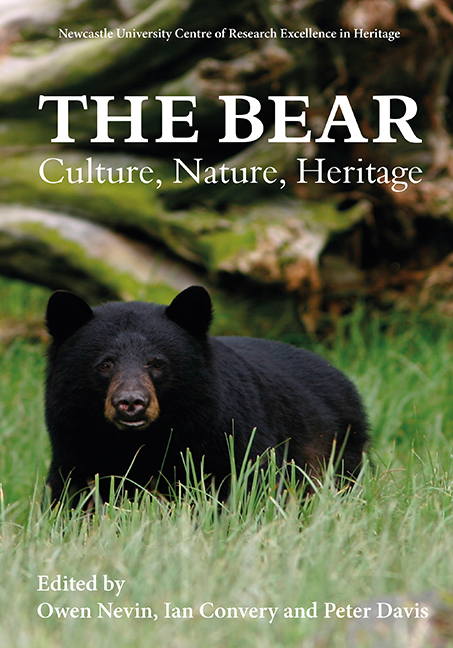Book contents
- Frontmatter
- Contents
- List of Illustrations
- Acknowledgments
- List of Abbreviations
- Foreword: The Bear: A Cultural and Natural Heritage
- Introduction: What is a Bear?
- Bear-People Interactions
- Bears in the Public Gaze
- Bear Biology, Management and Conservation
- Afterword: “It's Me Bear”: Reflections on a Unique Career Working with Bears
- List of Contributors
- Index
- Previous titles
18 - Reducing Human Impacts on Andean Bears in NW Peru Through Community-based Conservation
Published online by Cambridge University Press: 21 March 2020
- Frontmatter
- Contents
- List of Illustrations
- Acknowledgments
- List of Abbreviations
- Foreword: The Bear: A Cultural and Natural Heritage
- Introduction: What is a Bear?
- Bear-People Interactions
- Bears in the Public Gaze
- Bear Biology, Management and Conservation
- Afterword: “It's Me Bear”: Reflections on a Unique Career Working with Bears
- List of Contributors
- Index
- Previous titles
Summary
Andean bears (Tremarctos ornatus) are the last remaining bears in South America. They live throughout the tropical Andes in a large latitudinal (∼11°N–22°S) and elevational gradient (∼200–4700m above sea level (masl)) across diverse habitats. They are threatened throughout their range by habitat loss, habitat fragmentation and hunting, and in many places they overlap with human settlements and agricultural fields, creating competition or conflict for resources. Using a case study in northwestern Peru, we discuss how human activities affect the landscape and, in turn, the ecology of Andean bears, which have been identified as keystone actors in their environment. We then illustrate strategies that have been used to mitigate human impacts through community-based conservation (ie fuel-efficient stoves and environmental education), and how we have come to understand and address the needs of both bears and people through research in both the human and bear dimensions of conservation. We discuss the results of programme evaluations and their effectiveness, and conclude with implications for wildlife management and lessons from collaborating with local communities, governments and non-governmental organisations (NGOs).
ANDEAN BEARS
Andean bears, sometimes called spectacled bears, are declining in numbers due to habitat degradation, habitat fragmentation and unsustainable poaching (Velez-Liendo and García-Rangel 2017), making them globally vulnerable to extinction and endangered in Peru (MINAGRI 2014). Efforts to conserve Andean bears, and other large carnivores, can only succeed if the anthropogenic factors that underlie their endangerment are addressed (eg Peyton 1994).
Andean bears survive in a variety of habitats, including the seasonally dry tropical forests of northwest Peru (Figueroa 2013a), as at our core study area of Cerro Venado (Lambayeque, Peru, 6°26’S, 79°33’W). Because the seasonally dry tropical forest occurs at low elevations, in relatively gentle topography, with a climate that is more conducive to agricultural development than that of this bear's other habitats, most of this habitat has long been subject to strong human impacts, meaning that most Andean bears are now found in other habitats. The pressures that have reduced most lowland tropical dry forests continue to be a risk to the remaining patches and their bears.
- Type
- Chapter
- Information
- The Bear: Culture, Nature, Heritage , pp. 221 - 232Publisher: Boydell & BrewerPrint publication year: 2019



